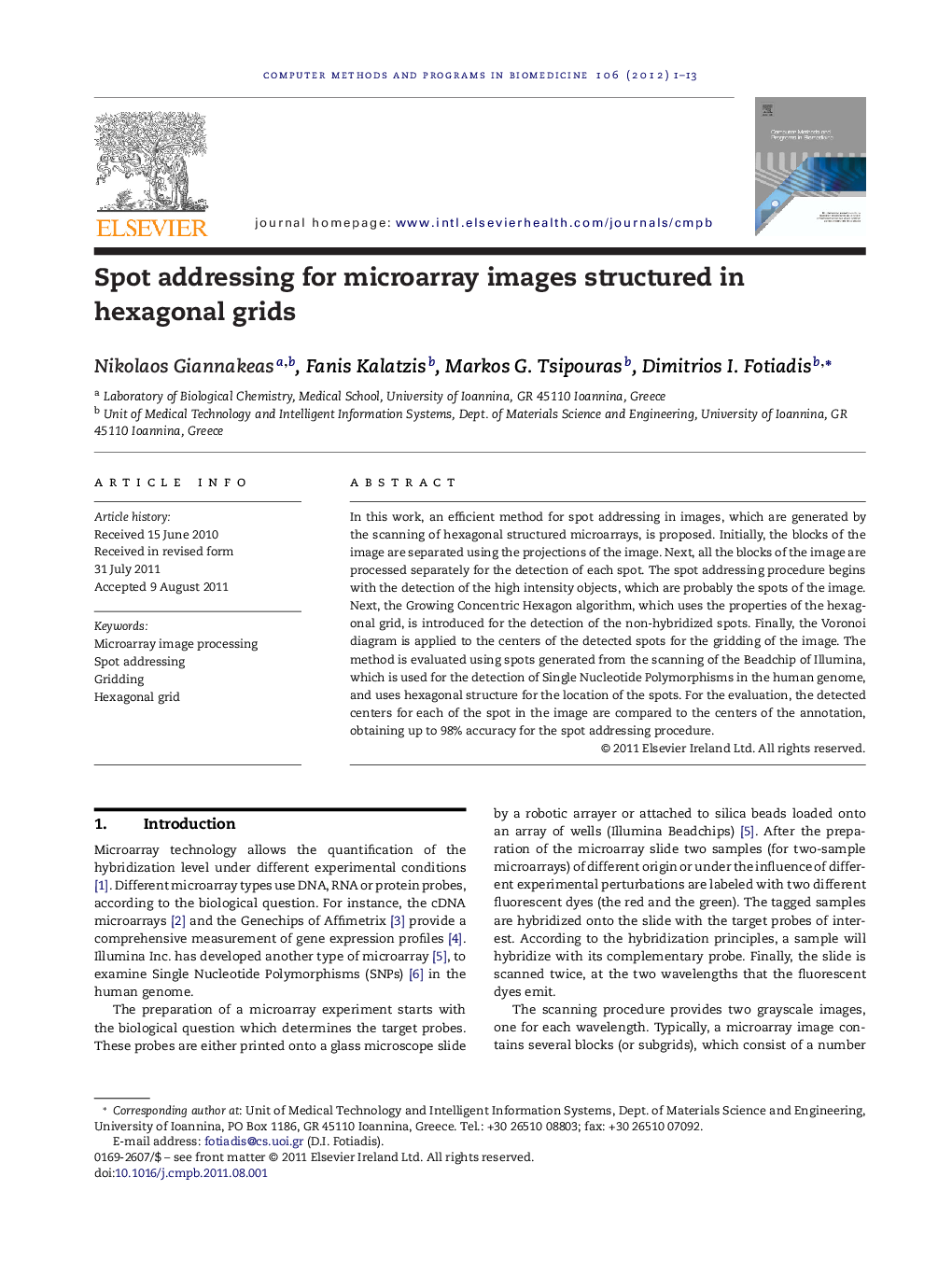| Article ID | Journal | Published Year | Pages | File Type |
|---|---|---|---|---|
| 466805 | Computer Methods and Programs in Biomedicine | 2012 | 13 Pages |
In this work, an efficient method for spot addressing in images, which are generated by the scanning of hexagonal structured microarrays, is proposed. Initially, the blocks of the image are separated using the projections of the image. Next, all the blocks of the image are processed separately for the detection of each spot. The spot addressing procedure begins with the detection of the high intensity objects, which are probably the spots of the image. Next, the Growing Concentric Hexagon algorithm, which uses the properties of the hexagonal grid, is introduced for the detection of the non-hybridized spots. Finally, the Voronoi diagram is applied to the centers of the detected spots for the gridding of the image. The method is evaluated using spots generated from the scanning of the Beadchip of Illumina, which is used for the detection of Single Nucleotide Polymorphisms in the human genome, and uses hexagonal structure for the location of the spots. For the evaluation, the detected centers for each of the spot in the image are compared to the centers of the annotation, obtaining up to 98% accuracy for the spot addressing procedure.
► A spot addressing and gridding method is proposed for hexagonal-structured microarray images. ► The method is based on a hybrid approach which employs advantages of both holistic and spot-by-spot methods. ► The Growing Concentric Hexagon algorithm is proposed for the detection of the non-hybridized spots. ► The method is evaluated using spots scanned from the CNV370 Beadchip of Illumina and it presents high accuracy. ► The method can be applied to any hexagonal-structured microarray image.
